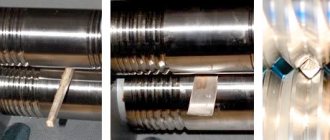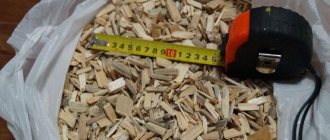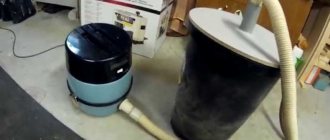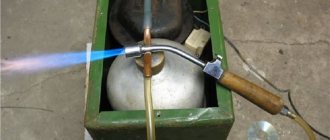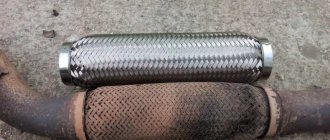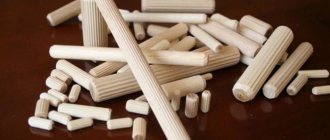Rollers are versatile equipment that allows you to effectively cope with sheet bending operations. Making rollers with your own hands is not so difficult, but to do this you need to first become familiar with the serial models, their design and principle of operation.
Three-roll hand rolls are the most suitable design for do-it-yourself production.
Rollers: operating principle
The key working mechanism of the device is a rotating cylinder through which hot sheets of metal are passed and bent. Rolling machines can be equipped with cylinders from 2 to 5 pieces , but three-roll and four-roll products are most often used.
The parts are bent through the action of the third rear shaft, and the fixing radius depends on the distance between the upper and rear shaft.
Sometimes metal rollers break and require replacement. When working with iron, the machine must be constantly heated, and the layers of iron after the rollers go into the furnace, they are heated there, and then pumped again. After that they go back to the machine.
After roller processing, the cross-section of the metal is reduced and it becomes longer under the influence of high metal temperature and degree of pressure.
To obtain a cylindrical product, the rear shaft must be adjusted parallel to the front one, and to make a cone, the rear shaft must be set at an angle relative to the front one.
There are roller models that can be used to process metal directly on the table, but they are not very functional. Working with them can be simplified using fasteners . The cost of rollers depends on their dimensions. And if you decide to make the machine yourself, you will save a lot.
The functions of modern rolling machines, home-made and factory-made, three-roll and four-roll, are as follows:
- the ability to bend pipes up to 160 degrees;
- working with metal pipes;
- deformation of pipes regardless of their diameter.
DIY rolling pipe bender
On such equipment, the workpiece acquires a given shape by rolling. In a home workshop, it is easier to make a 3-roller design with a manual drive. Let's consider two options for such machines.
Machine version with rotary platform
The design principle of such a machine for bending pipes with a cross-section other than round is as follows:
- The main frame is connected through a swivel joint to a rotating platform, which sets the bending angle.
- The platform is set in motion by a jack resting against it with a working rod.
- The profile is drawn by rotating the handle located on the intermediate shaft.
To make the base of the machine and the stands, you will need a channel with a wall height of 150 to 200 mm in an amount of about 3 m. A steel pipe with an internal diameter equal to the external diameter of the bearings, which is divided into 6 short sections, is suitable as a cage for the bearings, the basis of the rollers.
The rotating platform is not the only option for adjusting the bending parameters of the profile pipe; this can be done using the outermost rollers. To do this, holes are made in the support plates and channel so that the elements are movable. You can raise the end platform with any jack that you can find on the farm
The base and two platforms are made from the channel. Having retreated about 0.5 m from one of the sides, weld a vertical stand from the same channel. To do this, two sections are paired to make the stand strong.
Strictly observing horizontality, a stationary platform is mounted, and the rear pillar is welded to it. Next, they take a section of a profile pipe and increase the limiters with a height no less than the thickness of the profile pipe, the deformation of which is supposed to be carried out on the machine being manufactured.
The guide platform is connected to the main frame via door hinges. Bearings are mounted on the extended stops and edges of both platforms by welding and the structure is reinforced with corners. The shafts are inserted into bearings, and a handle is attached to the middle one. A jack is installed under the edge of the guide platform and secured to the base using a bolted connection.
Rolling machine with three rollers
On this machine, the pipe is laid on rollers located on the sides. The upper movable roller is lowered onto the product from above and in this way it is fixed. Next, they rotate the handle and transmit movement to the shafts through the chain. The pipe stretches and changes its geometry. Gradually increasing the pressure by tightening the clamping bolt and pulling the workpiece, the pipe is bent at the required angle.
The three roller roll forming machine is equipped with three rollers. By connecting a 1.5 kW electric motor to such a machine, you can bend pipes with a cross-section of up to 8 cm at a time
To make a machine that operates according to this scheme, it is necessary to prepare a shelf and rolled metal profile for the frame, shafts, 4 strong springs, a chain, bearings, fasteners, and other parts. To attach the bearings, you will need 3 shafts with parameters corresponding to the sprockets and bearings.
Two shafts are designed for lateral placement, and the third (pressure) is for hanging on springs. These elements will most likely have to be ordered from a workshop, but the rest can be done by hand.
The pressure shaft includes bearings, gears and rings. Threads are cut into the rings for clamping bolts and grooves are made. In the shelves made of channel bars, seats are made for the pressure shaft. At the final stage, the structure is assembled, starting with the installation of the frame.
Afterwards, the pressure shaft on springs, connected to the shelf by means of a key connection, is suspended. The support shafts are installed on the sides and the chain is pulled between them, using a magnetic corner as a holder. Attach a handle with a rotating tube to one of them, then carry out the work of installing the jack. It is attached to the platform with bolts and welding.
When installing the suspension shaft, a certain sequence is followed: first, install it on a shelf, weld nuts for the springs to it, turn the platform over and connect it to the springs. It should be noted that as the distance between the rollers increases, the forces applied for bending decrease.
Areas of application of machines
Roller mills are widely used in the production of things such as:
- chimneys;
- air ducts;
- pipes;
- ventilation systems;
- gutters.
Thanks to their compact size, the rollers can be used anywhere , right at the construction site, and hand-held devices will not damage the polymer coating of the metal.
For the food industry, crusher-type rollers are used, and for the chemical industry, sheet bending, sheeting and others are used.
Roller components
There are two types of rolling equipment:
- machines with a pressure roller, most often located in the middle;
- installations with tools placed eccentrically.
The first type is used for rolling thick metal. The second option is used when workpieces are deformed by no more than 2.5 mm.
In the equipment under consideration, a significant difference is the relative arrangement of the rolls: symmetrical or asymmetrical. Asymmetric machines are more versatile. They are used not only for rolling cylinders, but also for a variety of edge designs.
In practice, a scheme with three symmetrically located rolls is more often used, since it is more technologically advanced during maintenance. This type of rolling machine with external drive has the following components:
- electric motor;
- clinometer transmission or gearbox;
- a shaft with a main roll placed on it;
- side stands with bearing assemblies: rolling bearings are used in high-speed rollers, and sliding bearings are used for equipment power;
- two driven bottom rolls;
- bed with two support posts;
- protective casing for receiving semi-finished products during machine operation;
- roller control system.
The technological parameters of the equipment are adjusted by changing the gap between the rolls. In manual models this is done using a screw or ratchet mechanism, in automatic machines - programmatically.
Features of machines for metal
Without a rolling machine, it is impossible to shape sheet metal into a cylindrical shape, and pipe rollers help create a drainage system . Machines with forging cylinders are needed for cold bending of metal blanks; also, thanks to rollers, you can process:
- plastic;
- ductile metal;
- rubber compounds.
You need to choose one or another machine depending on the thickness of the metal:
- Twin-roll rollers include two parallel shafts, the upper one has a small cross-section and is made of high-strength steel, and the lower one has a large cross-section and is made of rubber-coated steel. Depending on the pressure force of the pipe, its outlet diameter is selected;
- three-rollers can be symmetrical or asymmetrical ; they are often used in the production of ventilation, round gutters and radius parts. In addition, three-roll rollers are used when processing products made of copper, iron, steel, zinc, etc.;
- four-roll designs are equipped with an additional roll at the bottom to simplify the rolling process.
The most common rollers are three-roll and four-roll. Thus, three-rollers have the following distinctive properties:
- a sheet whose width is less than 6 mm will slip between the shafts;
- the sheet rolling speed should be a maximum of 5 m per minute;
- it is difficult to operate the machine due to the lack of exact coordinates of the metal clamping point;
- affordable price.
But four-roll rollers have the following characteristics:
- the rollers are securely coupled and the risk of sheet slipping is minimized;
- rolling speed can exceed 6 m per minute;
- the work process is fully automated;
- the price is high.
Characteristics of the rolling process
The fundamental feature of sheet metal rolling is that the deformation process occurs over the entire contact surface . This slightly reduces productivity, but increases the durability of the rolling work rolls. The advantages of metal rolling include:
- Reduced operating costs for tooling and equipment.
- Increasing the service life of tools and machines.
- Effective use in single and small-scale production.
- Reducing losses from marriage.
- Low cost of a rolling machine compared to a hydraulic or mechanical press. The cost of its acquisition pays off within six months of active use.
During the rolling process, the operator can change the rate of metal deformation. With other forming and stamping operations this is not always possible.
Rolling a sheet of metal can be done in several ways:
- in the transverse direction of the workpiece feed;
- in the longitudinal direction;
- with screw feed.
The first option is used to obtain short pipes, the second - long ones.
The sheet rolling process is characterized by the following features:
- Deformation is produced by torque, not force. The value of the torque depends on the conditions of contact friction, the diameter of the working rollers and the physical and mathematical characteristics of the material.
- When performing an operation, the rolling speed does not affect energy costs; on the contrary, as the indicator increases, the working force of the process decreases.
- The friction between the rollers depends directly on the surface. Reduced roughness leads to reduced friction. Therefore, during continuous operation of rolling machines, it is necessary to periodically grind the surface of the equipment.
When rolling a steel product up to 6 mm thick, the original metal is processed in a cold state. If you are working with parts made of thick sheet material, preheating is used. In such cases, the rolling machine is installed near furnaces with a non-oxidizing heating system. Due to this, the formation of surface scale is reduced.
If hot-rolled sheet metal is deformed, the sheet is straightened before rolling. This is stipulated by the technical requirements of GOST.
Classification of machines
According to the bending method, rollers are:
- segmental, where the pipes are bent under the action of one pulling segment;
- mandrels, which deform thin-walled pipes;
- spring. Thanks to the presence of a spring, the plastic bends without deformation;
- crossbow, which are designed for pipes of one diameter or another.
Machines according to the method of use are divided into the following categories:
- Manual . Such machines are the most convenient and practical; they do not need to be connected to the network. Clamps and feed rollers with a chain drive are attached to their main frame. Manual profile machines are durable, reliable, compact, easy to adjust and have an affordable price. Manual rollers have a subcategory for jewelry; they are used for rolling and rolling jewelry blanks;
- Hydraulic . Hydraulically driven devices with high power, which are characterized by high performance. Their disadvantage is their dimensions; you cannot easily move such a unit with your own hands;
- Electrical . High productivity is achieved through the operation of an electric motor, although the principle of operation of the machine is no different from a manual one. Most often they are used on an industrial scale, since such rollers have a considerable price.
If you purchase or make a machine with your own hands for small household needs, then it is desirable that it have the following characteristics:
- mobility and light weight;
- compactness;
- economical in terms of energy consumption, since a powerful device can damage home wiring.
Making sheet-bending equipment yourself
To assemble a machine for sheet metal processing , you must have certain skills, consumables and tools.
The first thing you need is to draw it up yourself or find a drawing on the Internet. Next, you can begin preparing materials and assembling structural units, which include:
- roller frame;
- side racks;
- steel rollers (their diameter and number depend on the power of the device);
- a handle that sets the lower rollers in motion;
- drive unit (gear or chain), which ensures synchronous rotation of the lower rolls;
- spring type pressure unit.
The assembly of the rollers begins with the manufacture of the frame. It can be welded from thick steel blanks according to the dimensions indicated in the drawings. For the side racks, powerful channels made of low-carbon steel are suitable, which are attached to the frame by welding.
The elements of the drive unit are fixed on one of the racks, for which special holes are provided. After mounting the side posts, rollers are installed in the bearing units. They must be set in parallel and the remaining nodes must be finally fixed.
Rolling is widely in demand due to its undeniable advantages. Since this is a cold forming method , the material is not exposed to high temperatures during processing. This feature leaves the properties of the materials unchanged. The rolling operation makes it possible to obtain an accurate workpiece, a full-fledged part or a decorative element.
Rules for strengthening profile pipes
It is almost impossible to do without a device such as pipe rolling equipment in cases where you need to carry out repairs yourself, which will require the use of curved pipes.
To do this, you need to purchase a unit of this type or use homemade profile benders, the design of which is quite simple.
It also makes sense to ask the question of how to make a machine for bending metal because store-bought products are expensive, so buying them (especially if they are needed only for home use) is not always rational. In order to make high-quality homemade rolling, you can study the theory, watch a video on this topic, but the main thing is to listen to the advice of those who have already achieved excellent results.
When using the machine, please follow safety instructions
Naturally, to build your own rollers, you need:
- Have relevant knowledge;
- Have certain skills in manufacturing and using various technical devices;
- Prepare drawings and materials.
Do-it-yourself rollers can even be created from improvised building materials, which are almost always available in any garage or workshop at home. Moreover, such equipment, if everything is done taking into account all the recommendations, will work no worse than products from the store.
Which ones are on the market?
The household market provides a wide selection of pipe bending equipment, differing in different parameters. Machines can have several rollers and even directions for simultaneous bending of several workpieces. The work area is equipped with a folding or adjustable shaft.
The drive is output to the upper and lower shafts or only to one level. Electrical and hydraulic devices provide the possibility of manual rotation with an indication of how much force is required for this.
Modern models of pipe benders are classified according to the following criteria:
- actuator;
- dimensions;
- type of metal being processed;
- profile wall thickness;
- diameter (mm) of rollers;
- maximum length of workpieces.
Almost all machines have the option of reversing the rotation of the rolling mechanism.
